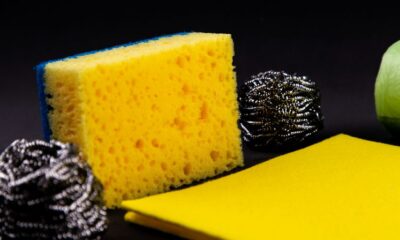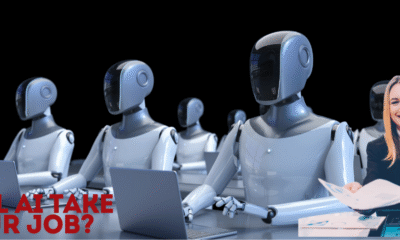Innovations
Exploring Innovations at NASA Johnson Space Center: A Gateway to the Future of Space Exploration

NASA Johnson Space Center is at the forefront of space exploration, pushing the boundaries of technology and research. From innovative labs focused on human performance to cutting-edge spacecraft designs, this center plays a crucial role in preparing for future missions. Moreover, it actively engages with the community and educates the next generation of scientists and engineers. In this article, we’ll explore the exciting innovations and initiatives that make NASA Johnson Space Center a gateway to the future of space exploration.
Key Takeaways
- NASA Johnson Space Center leads groundbreaking research in human performance and space health.
- The center collaborates with schools to inspire students through STEM initiatives.
- It develops advanced technologies for future missions, including Mars and lunar exploration.
- Public engagement programs invite community participation in space science.
- Partnerships with various organizations enhance the center’s capabilities and reach.
Innovative Research Initiatives at NASA Johnson Space Center
NASA’s Johnson Space Center isn’t just about sending rockets into space; it’s a hub of intense research aimed at pushing the boundaries of what’s possible. They’re constantly working on new ways to keep astronauts safe, improve mission efficiency, and inspire the next generation of scientists and engineers. It’s pretty cool stuff, honestly.
Human Performance Accelerator Lab
This lab is all about figuring out how to optimize human performance in space. They study everything from the effects of long-duration spaceflight on the body to developing countermeasures to keep astronauts healthy and productive. Think of it as a high-tech gym and research facility rolled into one. They look at things like:
- How microgravity affects muscle strength and bone density.
- The impact of radiation exposure on cognitive function.
- Developing exercise programs and nutritional strategies to combat these effects.
It’s not just about physical health either; they also look at the psychological aspects of being isolated in a confined environment for extended periods. The Innovation Gateway is a key resource for these studies.
STEM Innovation in Schools Challenge
This is a really neat program where Space Center Houston teams up with companies like Chevron to get local students involved in solving real-world space exploration problems. The STEM Innovation program challenges students to think like engineers and scientists. For example, the "Carbon Capture Challenge" tasked students with developing innovative ways to capture carbon dioxide, a critical skill for future long-duration space missions. It’s a great way to get kids excited about STEM fields and show them that they can contribute to space exploration, even from their classrooms. It involves:
- Classroom-based projects
- Expert panel discussions
- Real-world problem-solving
International Space Station DNA Experiment
This is where things get really interesting. Students from Space Center University actually designed an experiment that was sent to the International Space Station! The experiment focused on whether a specific enzyme could successfully cut a circular DNA strand into a linear one in the weightlessness of space. It’s a pretty complex experiment, but the basic idea is to see how microgravity affects biological processes at the molecular level. While submissions are no longer accepted, the implications of this research are huge. The experiment aimed to:
- Test the effects of microgravity on enzyme activity.
- Advance our understanding of DNA manipulation in space.
- Provide valuable data for future space-based research.
Cutting-Edge Technology Development
NASA Johnson Space Center isn’t just about sending people to space; it’s a hotbed for developing the tech that makes it all possible. From advanced robotics to sustainable energy, the center is pushing boundaries. It’s pretty cool to see what they’re cooking up.
Advanced Robotics for Space Missions
Robots are becoming increasingly important for space missions, especially when it comes to dangerous or repetitive tasks. NASA is working on robots that can perform maintenance on the International Space Station, explore other planets, and even assist astronauts during spacewalks. The R5 Valkyrie robot is a prime example, showcasing human-like dexterity for mission support. Programmers worldwide have even competed to enhance Valkyrie’s abilities through the Space Robotics Challenge. It’s like watching the future unfold, one robot step at a time.
Next-Generation Spacecraft Design
Spacecraft design is constantly evolving to meet the demands of longer and more complex missions. NASA is exploring new materials, propulsion systems, and designs to create spacecraft that are more efficient, reliable, and capable. This includes research into:
- Modular spacecraft designs for easier assembly and customization
- Advanced propulsion systems like ion drives for faster travel times
- Heat shields that can withstand extreme temperatures during re-entry
Sustainable Energy Solutions
Powering space missions is a huge challenge, especially for long-duration flights. NASA is investing in sustainable energy solutions to reduce reliance on traditional fuels and minimize environmental impact. Some areas of focus include:
- Developing more efficient solar panels for spacecraft and lunar habitats
- Exploring nuclear fission reactors for a reliable power source on the Moon and Mars
- Researching energy storage technologies to ensure continuous power during periods of darkness. The latest technology innovation is always exciting.
Educational Outreach Programs
NASA Johnson Space Center isn’t just about sending people to space; it’s also deeply invested in inspiring the next generation of explorers and innovators. They have a bunch of programs designed to get kids and adults excited about science, technology, engineering, and math (STEM). It’s pretty cool to see how they’re making space exploration accessible to everyone.
Space Center U
Space Center U is like a dream come true for anyone who’s ever wanted to train like an astronaut. It’s an immersive program where participants get to experience simulations, learn about mission control, and even try their hand at robotics. I heard they have different programs for different age groups, so whether you’re a student or a teacher, there’s something for you. It’s a great way to get a taste of what it takes to work at NASA. You can find more information about Space Center U on their website.
Explorer Camps
These camps are designed for younger kids, and they’re all about hands-on learning and fun. They do things like build rockets, learn about the solar system, and conduct science experiments. It’s a great way to spark an interest in STEM at an early age. I remember going to a similar camp when I was a kid, and it totally changed my perspective on science. It made it feel less like a chore and more like an adventure. Here are some typical activities:
- Rocket building and launching
- Astronomy lessons and stargazing
- Robotics challenges
- Simulated space missions
Educator Resources
NASA provides a ton of resources for teachers who want to incorporate space-related topics into their curriculum. This includes lesson plans, activities, and even professional development opportunities. I think it’s awesome that they’re supporting educators in this way. It’s not always easy to make science engaging, but with these resources, teachers can bring the excitement of space exploration into the classroom. These resources include:
- Curriculum-aligned lesson plans
- Interactive simulations and virtual tours
- Professional development workshops
- Classroom activities and experiments
Collaborative Partnerships for Space Exploration
NASA’s Johnson Space Center doesn’t go it alone. Space exploration is a team sport, and JSC actively cultivates partnerships to push the boundaries of what’s possible. It’s not just about NASA scientists; it’s about bringing together the best minds from various sectors to achieve ambitious goals. These collaborations are vital for sharing knowledge, resources, and expertise, ultimately accelerating progress in space exploration.
Corporate Collaborations
JSC works closely with many companies, from aerospace giants to tech startups. These partnerships often involve joint research projects, technology development, and the commercialization of space technologies. For example, a company might work with JSC to develop new materials for spacecraft or to create innovative software for mission control. These collaborations not only benefit NASA but also help companies gain a competitive edge in the growing space industry. It’s a win-win situation that drives innovation and creates economic opportunities. These collaborations are essential for human spaceflight.
Academic Partnerships
Universities play a big role in JSC’s collaborative efforts. JSC partners with academic institutions to conduct research, train the next generation of space explorers, and develop new technologies. These partnerships can take many forms, from funding research grants to offering internships and fellowships. Students and faculty get the chance to work on cutting-edge projects, while NASA benefits from the fresh perspectives and expertise of the academic community. It’s a great way to foster innovation and ensure a pipeline of talent for the future.
International Space Agencies
Space exploration is a global endeavor, and JSC collaborates with space agencies from around the world. These partnerships are essential for sharing resources, coordinating missions, and addressing common challenges. The International Space Station (ISS) is a prime example of international collaboration, with multiple countries working together to operate and utilize the orbiting laboratory. These partnerships not only advance scientific knowledge but also promote peace and cooperation among nations. Here are some examples of international collaboration:
- Joint missions to other planets
- Sharing of data and expertise
- Development of common standards and protocols
Future Missions and Exploration Goals
Okay, so let’s talk about where NASA Johnson Space Center is headed! It’s not just about what’s happening now, but what’s coming up next. And trust me, there’s a lot on the horizon. From returning to the Moon to setting our sights on Mars, it’s a pretty exciting time to be following space exploration. It’s like watching a real-life sci-fi movie unfold, except it’s all based on serious science and engineering.
Artemis Program Overview
The Artemis Program is a big deal. It’s basically NASA’s plan to send humans back to the Moon. The goal is to establish a sustainable presence there, which means more than just a quick visit. We’re talking about building infrastructure, conducting long-term research, and paving the way for future missions to Mars. It’s a multi-phased approach, with each mission building on the success of the last. The first few missions are focused on testing the technology and systems needed for lunar operations. Later missions will involve landing astronauts on the Moon’s surface and conducting scientific experiments. It’s a huge undertaking, but it’s also a crucial step in expanding our reach into the solar system. You can even support our mission if you want to help out!
Mars Mission Preparations
Mars is the ultimate goal, right? Getting humans to Mars is an incredibly complex challenge, and NASA Johnson Space Center is playing a key role in preparing for these missions. This includes developing new technologies for life support, radiation shielding, and propulsion. They’re also studying the psychological and physiological effects of long-duration spaceflight on astronauts. It’s not just about getting there; it’s about making sure astronauts can survive and thrive during the journey and on the Martian surface. There are a lot of things to consider, like how to grow food in space, how to handle medical emergencies, and how to deal with the isolation of being millions of miles from Earth. It’s a massive puzzle, but the scientists and engineers at Johnson Space Center are working hard to solve it.
Lunar Gateway Development
The Lunar Gateway is a planned space station that will orbit the Moon. Think of it as a pit stop for missions to the lunar surface and beyond. It will provide a place for astronauts to live and work in deep space, as well as a staging point for lunar landers and other equipment. The Gateway will also serve as a platform for conducting scientific research in the lunar environment. It’s a collaborative project involving multiple international partners, and it’s a key component of NASA’s long-term exploration strategy. It’s like building a base camp on Everest before attempting to reach the summit. The Lunar Gateway will make it easier and safer to explore the Moon and prepare for missions to other destinations in the solar system. It’s a pretty cool concept, and it’s exciting to see it taking shape.
Public Engagement and Community Involvement
NASA Johnson Space Center isn’t just about rockets and astronauts; it’s also deeply committed to getting the public involved and giving back to the community. They have a bunch of cool programs designed to spark interest in space and science, and they’re always looking for people to join in.
Volunteer Opportunities
Want to be part of something bigger? Johnson Space Center has a range of volunteer opportunities for people of all ages and backgrounds. Whether you’re passionate about education, history, or just love talking about space, there’s a role for you. Volunteers help with everything from leading tours to assisting with special events. It’s a great way to learn more about NASA, meet new people, and contribute to the center’s mission. Plus, you get to hang out in a pretty awesome place!
Public Tours and Events
Johnson Space Center offers a variety of tours and events throughout the year. These are designed to give the public a behind-the-scenes look at what NASA does. You can see historic mission control, check out spacecraft mockups, and learn about the latest research. They also host special events like astronaut appearances, lectures, and family-friendly activities. Check the center’s website for the most up-to-date schedule and ticket information. It’s a fun and educational experience for the whole family.
Community Science Projects
NASA also encourages community involvement through citizen science projects. These projects allow anyone to contribute to real scientific research. For example, you might be asked to analyze images of the moon, track changes in the Earth’s environment, or help classify galaxies. It’s a cool way to learn about science and make a difference. Plus, you get to work alongside NASA scientists and other volunteers. Here’s a quick rundown of some potential projects:
- GLOBE Program: Collect environmental data and share it with scientists worldwide.
- Aurorasaurus: Help track and map auroras by submitting your observations.
- Disk Detective: Search for new planetary systems by examining images from NASA’s Wide-field Infrared Survey Explorer (WISE).
Innovations in Space Health and Safety
Space travel? It’s not exactly a walk in the park for the human body. NASA’s Johnson Space Center is seriously dedicated to figuring out how to keep astronauts healthy and safe during those long missions. They’re tackling everything from the effects of microgravity to radiation exposure, and even the psychological challenges of being cooped up in a spacecraft for months (or years!).
HERA Campaign Patch Challenge
Okay, so the HERA Campaign Patch Challenge isn’t running anymore, but it’s a cool example of how NASA gets creative with research. The Human Exploration Research Analog (HERA) is basically a simulated space mission right here on Earth. People live in a habitat for weeks, doing experiments and dealing with the kinds of problems astronauts face. The challenge was about designing a mission patch that represents the next set of HERA studies. It’s all about raising awareness of the health and safety aspects of space travel.
Research on Astronaut Health
Astronauts go through a lot. Being in space messes with your muscles, bones, and even your sense of balance. NASA and partners like Baylor College of Medicine are studying how these things change in space, and how they might affect people back on Earth. For example, they’re looking at how balance changes with age, using what they learn from astronauts. It’s pretty wild how space research can help us understand health issues down here. They are also finding solutions that can help people on Earth. Space Center Houston and Baylor College of Medicine are investigating how balance changes with age.
Safety Protocols for Space Travel
Safety is obviously a huge deal when you’re launching people into space. NASA has a ton of protocols in place to minimize risks. These protocols are constantly evolving as we learn more about the challenges of long-duration spaceflight. Here are some key areas they focus on:
- Radiation Shielding: Developing better materials to protect astronauts from harmful radiation.
- Emergency Procedures: Training astronauts to handle all sorts of emergencies, from equipment failures to medical situations.
- Vehicle Design: Making sure spacecraft are as safe and reliable as possible, with redundant systems and fail-safes.
Looking Ahead: The Future of Space Exploration
As we wrap up our exploration of the innovations at NASA Johnson Space Center, it’s clear that the future of space travel is bright. The work being done here is not just about reaching new heights; it’s about solving real problems and pushing the boundaries of what’s possible. From advanced technologies to new research initiatives, every step taken is a step toward a new era of exploration. It’s exciting to think about what lies ahead. With each project, NASA is not just preparing for the next mission, but also inspiring the next generation of explorers. So, whether you’re a space enthusiast or just curious about what’s next, keep an eye on NASA. The journey is just beginning.
Frequently Asked Questions
What is the Human Performance Accelerator Lab?
The Human Performance Accelerator Lab is a special place at NASA where scientists study how to help astronauts work better in space. They test new ideas to improve how astronauts perform during missions.
How does NASA support STEM education?
NASA runs programs like the STEM Innovation in Schools Challenge to help students learn about science, technology, engineering, and math. They work with schools to make learning fun and exciting.
What technologies is NASA developing for space travel?
NASA is creating new robots, designing better spacecraft, and finding ways to use clean energy for future missions. These technologies will help us explore space more safely and efficiently.
How can I get involved with NASA’s outreach programs?
You can join NASA’s outreach programs by participating in events like Space Center U and Explorer Camps. These programs let you learn more about space and even do some hands-on activities.
What are the goals of NASA’s future missions?
NASA aims to send astronauts to the Moon through the Artemis program and prepare for a future mission to Mars. They are also working on the Lunar Gateway, which will help us explore deeper into space.
How does NASA ensure astronaut health and safety?
NASA conducts research on astronaut health and safety through programs like the HERA Campaign. They create safety plans and study how to keep astronauts healthy during long missions.
-

 Home and Garden2 days ago
Home and Garden2 days agoTransform Your Space: A Guide to Minimalist House Interior Design in 2025
-

 Home & Family3 days ago
Home & Family3 days ago10 Essential Cleaning Hacks for Bathroom Surfaces You Need to Try
-

 Press Release6 days ago
Press Release6 days agoWhat Makes Alaxio Different from Every Other Altcoin?
-

 Innovations5 days ago
Innovations5 days agoWill AI Take Your Job? The Truth About Automation and Employment
-

 Crime3 days ago
Crime3 days agoExploring the Most Anticipated New True Crime Documentaries of 2025
-

 Health & Fitness2 days ago
Health & Fitness2 days agoDiscover the Best Multivitamin for Women Over 40: A Comprehensive Guide to Optimal Health
-

 Business3 days ago
Business3 days agoMaximize Your Earnings with American Express High Yield Savings Accounts in 2025
-

 Health & Fitness3 days ago
Health & Fitness3 days agoDiscovering the Best Multivitamin for Women Over 40: Essential Nutrients for Optimal Health


















